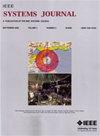A High-Dimensional Dynamic Characteristics-Based Boundary Test Scenario Generation Method for UAVs in Dynamic Target Tracking
IF 4.4
3区 计算机科学
Q1 COMPUTER SCIENCE, INFORMATION SYSTEMS
引用次数: 0
Abstract
Effective boundary scenario generation methods are critical for dynamic target tracking when evaluating the performance of unmanned aerial vehicles. However, traditional methods primarily rely on exhaustive testing or random sampling and often assume that different contributing factors are independent. This results in the ineffective generation of boundary scenarios and a lack of realism. In this study, a novel high-dimensional dynamic characteristics-based boundary test scenario generation method is proposed using reinforcement learning (RL). Boundary test scenarios can be explored more purposive, by designing an appropriate reward function. First, an innovative scenario modeling method is developed to model the influence of environment, occlusion, and other interference. A joint distribution model of the key correlation factors, such as light intensity and clouds, is also established. This ensures scenario authenticity and test accuracy. Subsequently, a high-dimensional dynamic spatial Markov decision process (HDDS-MDP) model is constructed to facilitate the generation of boundary scenarios based on the scenario modeling. Ultimately, RL is employed to solve the HDDS-MDP model and generate boundary test scenario, thereby substantially improves the effectiveness of boundary test scenario generation. The simulation results indicate that the boundary test scenario generation effectiveness is improved by 91% over random sampling methods.基于高维动态特性的无人机动态目标跟踪边界测试场景生成方法
在评估无人机性能时,有效的边界场景生成方法是动态目标跟踪的关键。然而,传统的方法主要依赖于彻底的测试或随机抽样,并且经常假设不同的影响因素是独立的。这导致边界场景的无效生成和缺乏现实性。本文提出了一种基于强化学习的高维动态特征边界测试场景生成方法。通过设计适当的奖励函数,可以更有目的地探索边界测试场景。首先,提出了一种创新的场景建模方法,对环境、遮挡和其他干扰的影响进行建模。建立了光强和云量等关键相关因子的联合分布模型。这确保了场景的真实性和测试的准确性。在此基础上,构建了高维动态空间马尔可夫决策过程(HDDS-MDP)模型,便于边界场景的生成。最终,RL用于求解HDDS-MDP模型并生成边界测试场景,从而大大提高了边界测试场景生成的有效性。仿真结果表明,该方法的边界测试场景生成效率比随机抽样方法提高了91%。
本文章由计算机程序翻译,如有差异,请以英文原文为准。
求助全文
约1分钟内获得全文
求助全文
来源期刊

IEEE Systems Journal
工程技术-电信学
CiteScore
9.80
自引率
6.80%
发文量
572
审稿时长
4.9 months
期刊介绍:
This publication provides a systems-level, focused forum for application-oriented manuscripts that address complex systems and system-of-systems of national and global significance. It intends to encourage and facilitate cooperation and interaction among IEEE Societies with systems-level and systems engineering interest, and to attract non-IEEE contributors and readers from around the globe. Our IEEE Systems Council job is to address issues in new ways that are not solvable in the domains of the existing IEEE or other societies or global organizations. These problems do not fit within traditional hierarchical boundaries. For example, disaster response such as that triggered by Hurricane Katrina, tsunamis, or current volcanic eruptions is not solvable by pure engineering solutions. We need to think about changing and enlarging the paradigm to include systems issues.
 求助内容:
求助内容: 应助结果提醒方式:
应助结果提醒方式:


